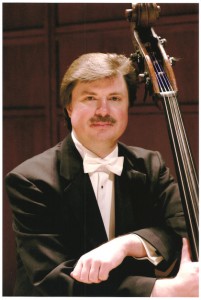
Photo credit: Michael Zirkle
For considerable periods, the four oboe players had nothing to do. Their number should be reduced, and their work spread over the whole orchestra.
and
Forty violins were playing identical notes. This seems unnecessary duplication, and this section should be drastically cut. If a larger volume of sound is required, this could be achieved through an electronic amplifier.
Somehow the joke isn’t as funny these days, and when we hear the rhetoric coming from some of our boards and managements, we have to wonder if they know that it is a joke at all. There is irrefutable evidence that our orchestras are shrinking, and even further evidence that some of our boards want them to shrink even more.
I’ve always thought that the arts take a strange business model when dealing with tough financial times. The first instinct is always to cut the product, typically by reducing the size of the orchestra. In ballet companies, we see the orchestra eliminated entirely, and the audience must watch dancers perform to taped music, all the while suffering the indignity of being told that they are still paying for a full ballet performance.
Few businesses have ever succeeded in weathering tough financial times by offering an inferior product to their public. Yet, that is just what some of our boards seek to do when they advocate cutting the size of the orchestra. Even in situations where smaller deficits exist, managements will sometimes reduce the “extras” budget, thereby offering a smaller orchestra to the audience, hoping that they won’t notice even as they are called on for contributions.
Ever more frequently though, we see a business model that is even harder to justify—that of the threat of bankruptcy. We have seen orchestras told by their boards and managements that if they do not agree to cuts in the size of the ensemble, then the organization must turn to bankruptcy to solve its financial woes.
This “to cure you we must kill you” approach most certainly makes it difficult for a community to invest in its orchestra. People like to invest in things that are helping to make their communities thrive.
The successful marketing approach should be one of contributing to your community, and I think it is legitimate to question the effectiveness of the fundraising pitch that begins with “We are doomed.”
For too many years the messages in our glossy brochures have conflicted with the messages in our inky newspapers. Our seasons have slogans like “Experience the Excitement!” But some of our managements put out a message of “Invest in Our Demise.”
This isn’t true everywhere, of course. There are many communities where orchestras are thriving and growing, and there are some managers who advocate for the growth in the size of their orchestras. Those are the managers who are succeeding, because they understand the importance of artistic quality and a positive message in the role of fund raising. But these successes can also be traced to a connection with the audience, an ambitious management, and musician involvement in the community. Where there is success there is also investment and a sense of community involvement. An orchestra can help a city thrive in so many ways—artistically, educationally, and financially. The way to encourage financial support of your orchestra is to demonstrate the value of the orchestra in its community, not by announcing publicly that the community cannot support a great orchestra.
Orchestras can only measure up to the task of serving their communities when they also aspire to achieve the highest possible artistic level. Aristotle wrote that “The true nature of anything is what it becomes at its highest.” Audiences, contributors, politicians, and school children can and will be inspired by the drive for excellence, and they cannot and will not be inspired by negative messages and a business plan that offers them an inferior product.
Boards who would advocate for a reduction in the quality of their orchestra are not just letting down their musicians and their audiences. They are missing an opportunity to elevate their community, and the lives of everyone who lives there, learns there, and does business there. But even more so, they are engaging in a poor business practice, undermining their own fund raising by asking people to contribute to something that is under the threat of not even existing past a few weeks or months. It simply does not make any sense.
The time is now to change this rhetoric. As musicians, let us resolve to work with those managements who offer a positive message to the community. Let us do all we can to help them inspire those we serve with our whole organization’s commitment to excellence and to community service. But where a management is engaged in promoting a negative public message about its orchestra or about the orchestra field in general, then let all of us, including ICSOM, the AFM, and all our musicians, equally resolve to rise up to challenge that rhetoric and replace it with a positive and inspiring message.
We live in a time that is hungry for leadership. To lead, you must inspire. That is what orchestras are designed to do. While our orchestras are inspiring our cities, they should be touted as models of excellence in a world that is all too often content with mediocrity. Where there is a negative image, we must change the message, repeat a positive message, and stay on our message: Orchestras are invaluable to our communities.
Serge Koussevitzky said “A city without a symphony is a city without a soul.” A city should not tolerate a management or a board that would threaten to sell its soul into bankruptcy. Instead, the community should demand what it deserves: creative, positive stewardship of one of its most precious commodities—its own symphony orchestra.





